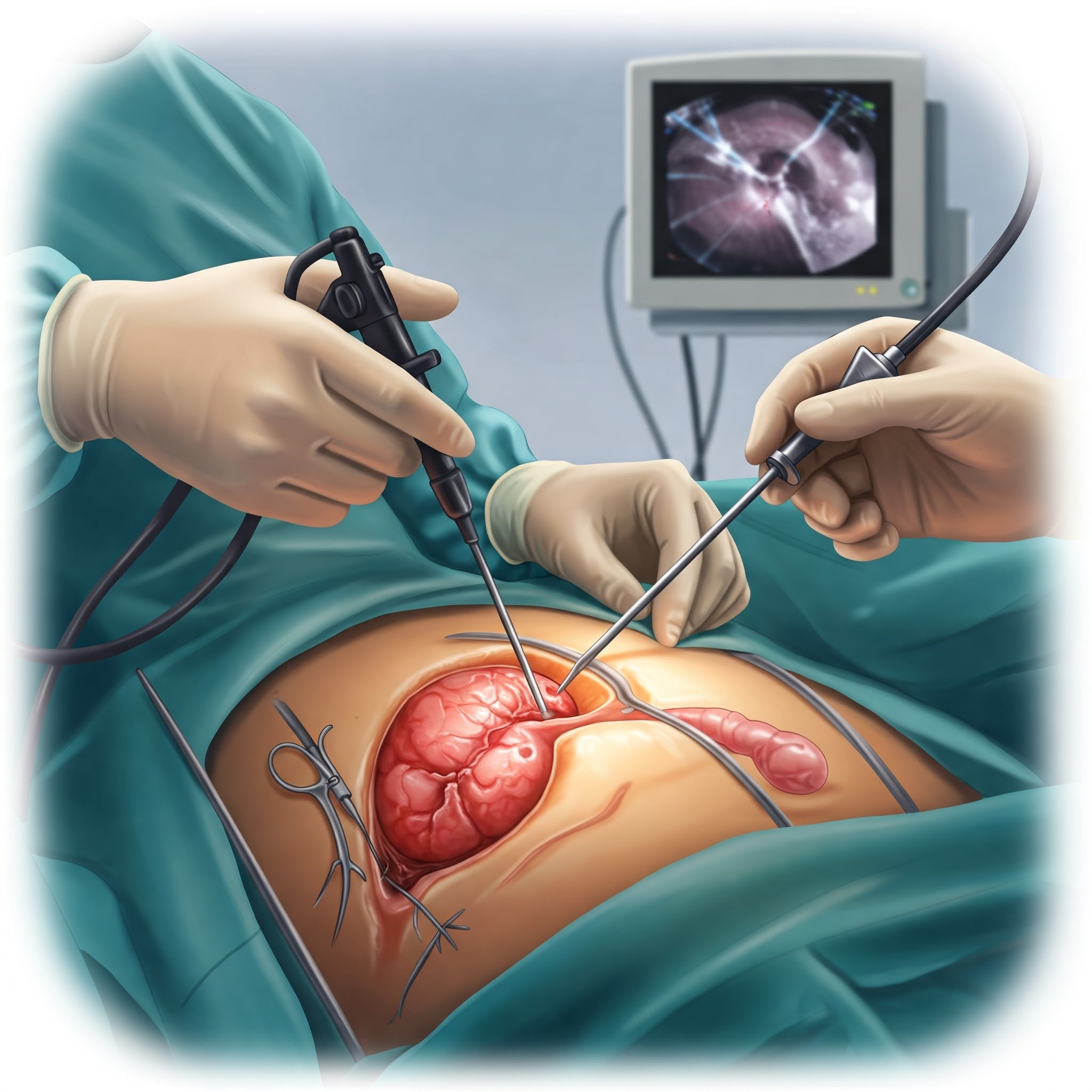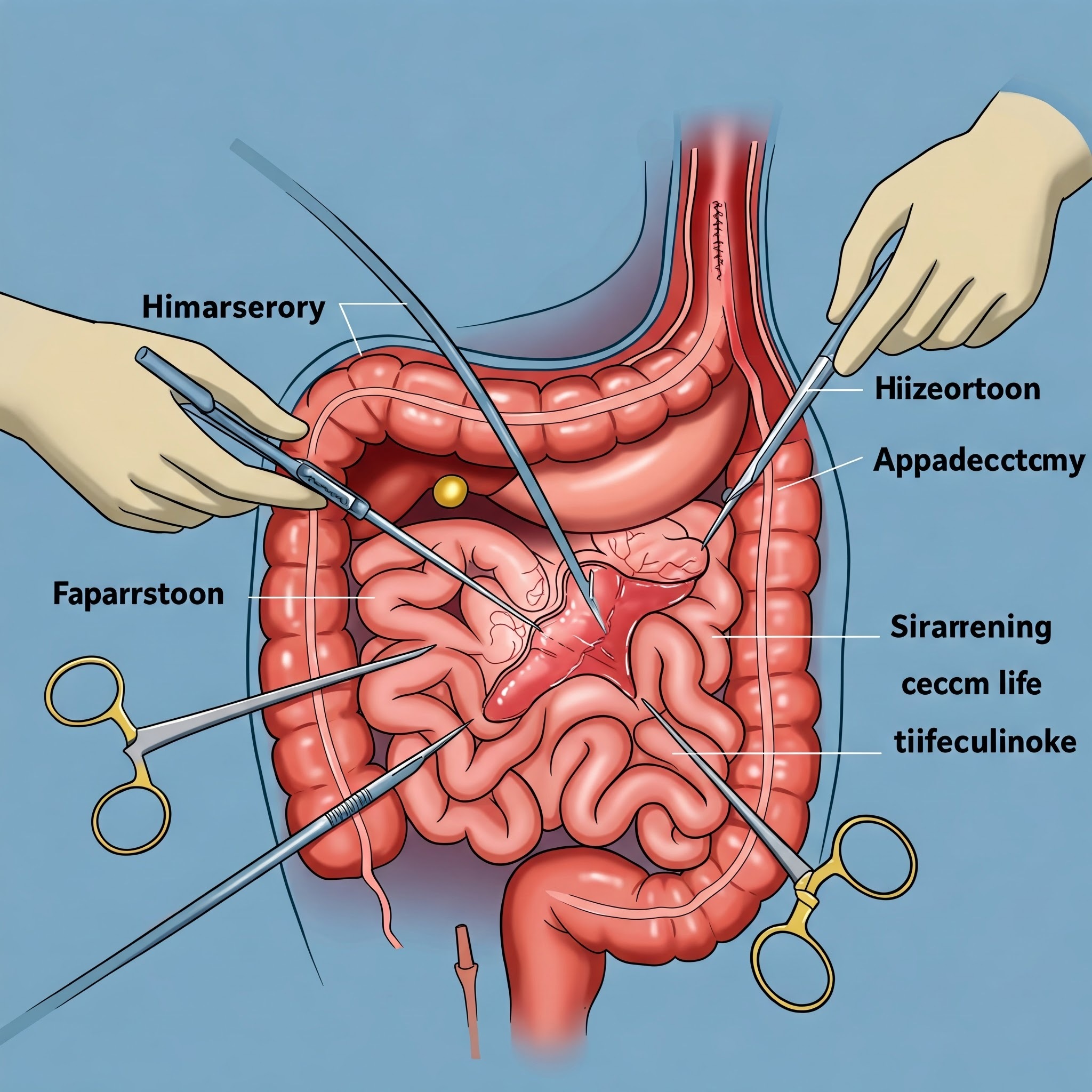Laproscopic Appendectomy
Advanced laparoscopic appendectomy for safe and effective treatment
Expert appendix surgery with minimally invasive precision
At Neo-Woman’s Laparoscopic Surgery Clinic, we specialize in performing laparoscopic appendectomy procedures to treat appendicitis with minimal discomfort and quicker recovery times. Appendicitis, caused by swelling and infection in the appendix, can lead to severe abdominal pain and potential complications if left untreated. Our expert surgeons use minimally invasive surgery techniques to remove the inflamed appendix through small incisions, ensuring faster healing and less post-operative pain.
The laparoscopic appendectomy steps involve creating a few small incisions in the abdomen, inserting a tiny camera, and using specialized instruments to safely remove the appendix. This advanced appendix surgery significantly reduces scarring, infection risk, and hospital stay duration compared to traditional open surgery.
Understanding the importance of timely intervention, our team ensures accurate diagnosis and prompt treatment to prevent complications such as abscess formation or rupture. Whether you’re experiencing symptoms like persistent pain, nausea, or digestive discomfort, our clinic provides comprehensive care from diagnosis to recovery.
Choose Neo-Woman’s for a safe, efficient, and patient-friendly approach to managing appendicitis with the latest laparoscopic appendectomy procedure techniques.


Laparoscopic appendectomy: precision surgery for inflamed appendices
Our Laparoscopic Appendectomy service offers a minimally invasive solution for removing an inflamed appendix. Using small incisions and advanced laparoscopic techniques, this procedure reduces recovery time, minimizes scarring, and ensures a faster return to daily activities. Early intervention is crucial to prevent complications like appendicitis rupture, and our skilled surgeons provide expert care for safe and effective appendix removal.
- Understanding the symptoms of appendicitis: when to seek help
Appendicitis is a common yet potentially serious condition that requires timely diagnosis and treatment. It occurs when the appendix, a small, tube-like structure in the lower right abdomen, becomes inflamed. Symptoms of appendicitis often start with pain near the navel, gradually shifting to the lower right side. Additional signs include nausea, vomiting, fever, and loss of appetite. In women, symptoms can sometimes be mistaken for gynecological issues, making accurate diagnosis crucial. If left untreated, an inflamed appendix can rupture, leading to life-threatening complications like peritonitis. Seeking medical help at the earliest sign of persistent abdominal pain can significantly reduce the risk of complications and ensure prompt, effective care.
Here are some of the check up and health screenings that you should get done:
- Pelvic Exam
- Pap Smear (Cervical Cancer Screening)
- Breast Exam
- Blood Pressure Measurement
- Cholesterol Screening
- Bone Density Scan (DXA)
- Blood Sugar Test (Glucose Screening)
- Thyroid Function Tests
- Blood Count (Complete Blood Count, CBC)
* The specific exams and screenings recommended can vary based on a woman’s age, family history, personal health history, and risk factors. It’s essential to discuss your individual healthcare needs and screening schedule with your healthcare provider.
- Step-by-step guide to the laparoscopic appendectomy procedure
The laparoscopic appendectomy procedure is a modern, minimally invasive surgery to remove the appendix when appendicitis is diagnosed. This procedure typically involves three to four small incisions through which a laparoscope—a thin, flexible tube with a camera—is inserted. The surgeon views the abdominal cavity on a monitor while carefully detaching and removing the inflamed appendix. Carbon dioxide gas is used to inflate the abdomen, providing better visibility and access. After the appendix is removed, the incisions are closed with sutures or surgical tape. This technique reduces postoperative pain, shortens recovery time, and minimizes scarring compared to traditional open surgery.
- Benefits of minimally invasive surgery for appendix removal
Minimally invasive surgery, particularly laparoscopic appendectomy, has become the preferred method for appendix removal. Unlike traditional open surgery, this approach requires only small incisions, resulting in less postoperative pain and faster recovery. Patients typically experience reduced hospital stays and quicker returns to daily activities. Additionally, the risk of wound infections is significantly lower due to the smaller incision size. Minimally invasive surgery also offers cosmetic advantages by minimizing visible scarring. For women, this method is particularly beneficial, especially when reproductive organs might be involved or when differential diagnosis is necessary.
- Appendicitis in women: unique signs and timely diagnosis
Recognizing appendicitis in women can be challenging due to symptoms that may mimic gynecological conditions such as ovarian cysts, ectopic pregnancy, or endometriosis. The appendix is located near reproductive organs, making diagnosis more complex. Women with appendicitis might experience lower abdominal pain, nausea, vomiting, and fever. Timely diagnosis is critical to prevent complications like a ruptured appendix, which can lead to peritonitis or an abscess. Healthcare professionals often use ultrasounds, CT scans, and blood tests to distinguish appendicitis from other conditions. Early intervention ensures safer, more effective treatment and reduces the risk of long-term complications.
- Post-appendectomy care: tips for a smooth recovery
After appendix surgery, proper postoperative care is essential for a smooth recovery. Patients should follow their doctor’s instructions, including medication regimens and activity restrictions. Pain management, wound care, and gradual resumption of activities are crucial aspects of recovery. Avoiding strenuous activities, especially lifting heavy objects, can prevent complications like hernia formation. Monitoring for signs of infection—such as redness, swelling, or discharge from the incision site—is critical. Maintaining a balanced diet with adequate fiber and hydration can also support digestive health during recovery. By adhering to these guidelines, patients can minimize discomfort and reduce the risk of complications following an appendectomy.

Frequently asked questions
What are the symptoms of appendicitis?
Appendicitis symptoms include abdominal pain (usually on the lower right side), nausea, vomiting, fever, and loss of appetite. If untreated, an inflamed appendix can rupture, causing severe complications.
What is laparoscopic appendectomy?
It’s a minimally invasive surgery using small incisions and a camera to remove the appendix, reducing recovery time and post-op discomfort.
How long is the recovery period after a laparoscopic appendectomy?
Most patients recover within 1-3 weeks, but complete healing can take longer depending on individual health.
Are there risks involved in this surgery?
Risks are rare but may include infection, bleeding, or damage to nearby organs. Your surgeon will discuss these before the procedure.
How should I care for myself after surgery?
Follow your doctor’s instructions, avoid heavy lifting, and monitor the incisions for signs of infection.
Disclaimer: Results and patient experiences may vary. These are dependent on a number of factors including age, medical history, lifestyle and more.

Service line
Our locations
Neo-woman clinic
Jm road
1277 renaissance, 1st floor,j m road, nest to mcdonalds, deccan gymkhana, pune contact us at: 8888576666
Our locations
Neo-woman clinic hadapsar Jm road
Gandharva empire, 3rd floor, above fab india, raskar chowk, amanora park, hadapsar, pune contact us at: 7030114488
Copyright © 2025 neowoman – all rights reserved.
:::|Powered by Dimakh Consultants |:::